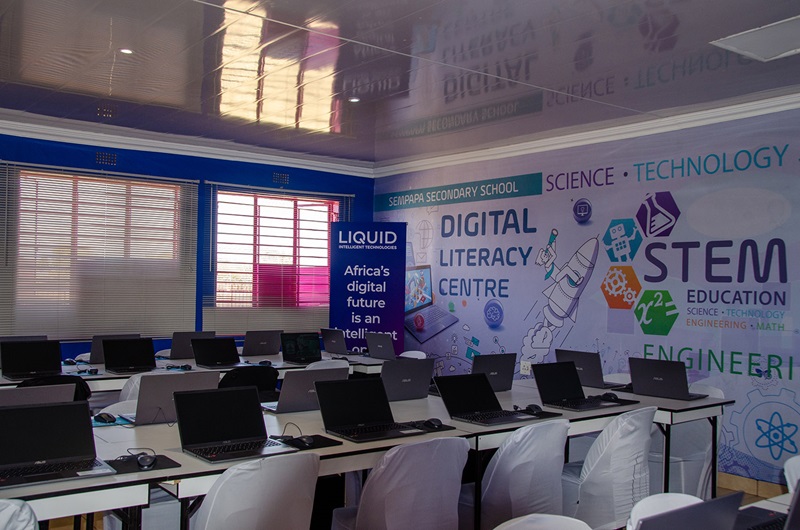By Boyd Chislett, Chief Business Officer for Liquid Intelligent Technologies
Throughout history, there have been milestones that have resulted in a permanent change in how we live and work. Be it the steam engine or the telephone, innovation has been the common thread in all the industrial revolutions that we have witnessed over the years. The Fourth Industrial Revolution (4IR) and its associated technologies like IoT, cloud, etc., are not new, they have been around for some time. However, the global pandemic pushed CEOs/CIOs (decision-makers) to finally adopt these technologies and strategies because they had to reinvent their business models overnight to accommodate the remote worker, and this could only be implemented if they digitally transformed their businesses. Any organisation that delayed its cloud adoption journey felt the full impact of being late adopters of this technology.
Today, unfortunately, we are surrounded by the remains of numerous businesses that did not pay heed to the emerging trends, and unfortunately, have found themselves wanting in meeting the demands of their customers. In the initial months, we witnessed several solutions that were cobbled together to support the remote worker, but over the last few months, the work from home solutions have been fine-tuned to support employees working effectively, not just from their homes but from any location. Three waves later, decision-makers have realised that the workforce has become very comfortable working remotely, the new normal is now the norm.
We are already seeing talented workers exploring a better-quality lifestyle which includes remote working. However, retaining talented staff will be extremely difficult if a business is not forward-thinking and does not have a remote working or hybrid working option. In South Africa, we may see fundamental changes in how enterprises provide these dynamic, remote working benefits, as evidenced over the previous two months.
Enterprises are no longer grappling with productivity issues but rather more social/behavioural issues like employee mental health, employee engagement, and culture-related shortcomings. Irrespective of the location, employees today expect a seamless experience when they log onto their devices, however, there are some fundamental issues that enterprises are dealing with since in-person interactions have waned.
Not only has there been an uptake in the usage of online collaboration tools to overcome this challenge. But, it has been interesting to see the evolution of tools like Office 365, Teams and teams Business Voice and recently Operator Connect, to ensure that staff are working effectively with each other, rather than in isolation. In addition, executives now have the advantage to host webinars and engage with staff virtually at any time, irrespective of where they are. Virtual wellness sessions have assisted with employee burnout, and now there are digital systems in place to manage team collaboration and documents. So, with the right approach, WFA can help companies retain key skills by allowing them to choose their environment.
Managing a remote worker means ensuring that when they are accessing your corporate network, there are protocols in place from a connectivity, security, and protection of information perspective. For example, some people may work from a coffee shop or any other public environment, and you need to ensure that they connect securely when they log on to the network. You also need to protect the information sitting on their local device like laptops, cell phones, or iPads. The network they are utilising needs to have enterprise-appropriate levels of security and protocols in place.
For larger organisations, it’s more about managing this ecosystem, but for SMEs, it’s more about how to access this ecosystem so that multiple contractors are not hired to provide a combination of services. An SME often does not have the scale efficiencies to start contracting five or six entities to provide an end-to-end service. Covid-19 forced digital migration on them, and suddenly they realised that they needed an internet provider, a hardware provider, a Wi-Fi provider, someone to manage onsite and offsite security, someone to do troubleshooting, and someone to do UPS for load shedding.
The question that keeps popping up among SMEs – is there a one-stop shop where I can get all of these from one service provider? And, this is where Liquid is an ideal partner, why you ask? Not only can we assist our customers in South Africa, but they are also guaranteed the same seamless experience in 20 African countries where we have operations, whether managed or unmanaged services.
If there ever was a time that highlighted how easily organisations can get categorised as ‘innovators ’, ‘ early adopters ’, ‘ late majority ‘ and ‘ laggards ’, it is now. Although cloud computing and digital transformation have been discussed for over a decade, we have seen significant growth of data centre assets available on the African continent facilitating digital journeys. So why was there a delay in the adoption of this technology? Why did we need a pandemic to push decision-makers to understand the importance of digital migration? We need to ensure that we are not behind the curve when adopting newer technologies to create a niche for local businesses; for example, AI combined with BI can produce real-time insights for almost instantaneous business pivots that help organisations thrive. Let us not wait for the next pandemic to create the jobs of the future, but rather act now.






